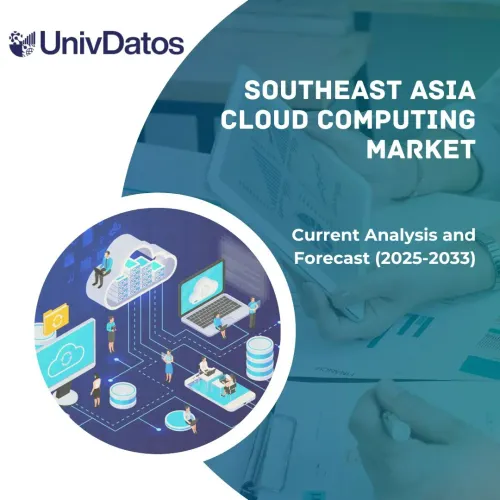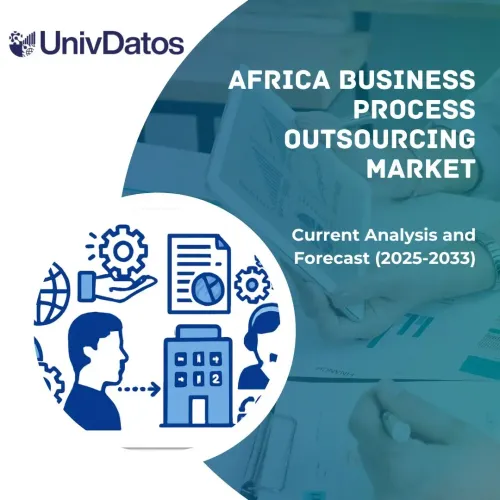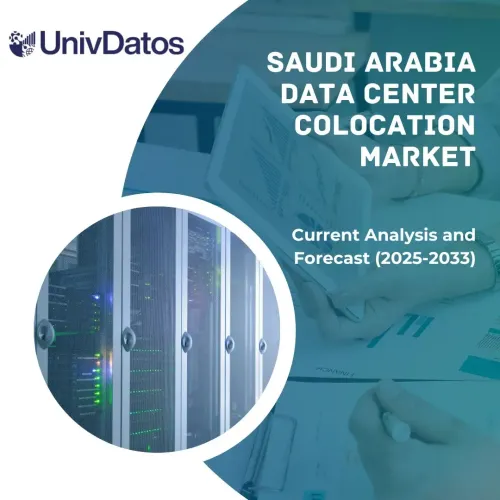- Home
- About Us
- Industry
- Services
- Reading
- Contact Us
Algorithmic Trading Market: Current Analysis and Forecast (2023-2030)
Emphasis on Type (stock markets, forex, ETF, bonds, cryptocurrencies, and others); Deployment type (on-premises, and cloud); End-users (institutional investors, long-term traders, short-term traders, and retail investors) and Region/Country

The Algorithmic Trading Market was valued at 12.3 billion in 2022 and is expected to grow at a steady rate of around 10.3% in the forecasted period (2023-2030) owing to the increasing availability of data, and advances in supercomputing and cloud computing technology. Algorithmic trading, also known as automated or black-box trading, refers to the use of computer programs and advanced algorithms to execute trades in financial markets. These algorithms use mathematical models and statistical analysis to make trading decisions based on market data and other factors, such as economic indicators and company news. The goal of algorithmic trading is to maximize profits and losses by making trades faster and more efficiently than human traders. Also, emerging technology like machine learning and artificial intelligence are driving the growth of the market as AI and ML algorithms analyze vast amounts of market data and make predictions about future market trends, which is used to make more profitable trades. They also automate trading decisions, detect potential risks, and prevent fraud. These technologies have the potential to improve the efficiency and speed of trading decisions, making them a popular tool among traders.
Some of the major players operating in the market include 63 moons technologies limited; ALGOTRADERS; Argo Software Engineering; InfoReach, Inc.; Kuberre Systems, Inc.; MetaQuotes Ltd; REFINITIV; Symphony; Tata Consultancy Services Limited; VIRTU Finance Inc.
Insights Presented in the Report
“Among type, the stock market segment is currently the leading segment of the market during forecast period.”
Based on type, the market is segmented into stock markets, forex, ETF, bonds, cryptocurrencies, and others. Among these, the stock market segment is currently the leading segment of the market. This is because the stock market is one of the most liquid and widely traded markets in the world, with a large number of traders and investors participating in it. For instance, a report by the Futures Industry Association (FIA) found that the use of automated trading has increased significantly in the futures industry. In 2020, the FIA reported that 94% of futures commission merchants (FCMs) use automated trading, up from 85% in 2015. Additionally, the stock market offers a wide range of assets to trade, including stocks, bonds, and options, which provides traders with many opportunities to make profitable trades.
“Amongst deployment type, cloud category to witness significant market growth during the forecast period.”
Based on deployment type, the market is bifurcated into on-premises, and cloud. Among these, the cloud segment is currently the leading segment of the algorithmic trading market owing to the increasing adoption of cloud technology worldwide. For instance, in 2020, the report by the Federal Reserve System estimates that 90% of financial institutions used cloud technology, up from 70% in 2015. Also, cloud-based deployment offers several benefits to traders, including scalability, flexibility, and cost-effectiveness. Cloud-based algorithms can be easily scaled up or down based on market conditions, and traders can access them from anywhere in the world. Additionally, cloud-based algorithms are often less expensive than on-premises algorithms, as they do not require traders to purchase and maintain their own hardware and infrastructure.
Algorithmic Trading Market Report Coverage

“North America to hold a significant share in the market.”
North America is anticipated to have a significant share of the market. This is because technological advancements in North America have empowered financial institutions with faster and more efficient trading strategies, leading to increased adoption of algorithms. Additionally, the region’s well-developed financial infrastructure, including advanced exchanges and regulatory frameworks, has facilitated algorithmic trading. Moreover, the availability of large pools of liquidity and the concentration of major financial players in North America created an ideal environment for algorithmic trading strategies. Furthermore, the increasing demand for minimizing trading costs and optimizing investment returns has driven the expansion of this market, as algorithmic trading in North America offers a competitive edge in achieving these objectives.
Reasons to buy this report:
- The study includes market sizing and forecasting analysis validated by authenticated key industry experts.
- The report presents a quick review of overall industry performance at one glance.
- The report covers an in-depth analysis of prominent industry peers with a primary focus on key business financials, product portfolio, expansion strategies, and recent developments.
- Detailed examination of drivers, restraints, key trends, and opportunities prevailing in the industry.
- The study comprehensively covers the market across different segments.
- Deep dive regional level analysis of the industry.
Customization Options:
The global Algorithmic Trading Market can further be customized as per the requirement or any other market segment. Besides this, UMI understands that you may have your own business needs, hence feel free to contact us to get a report that completely suits your requirements.
Table of Content
Research Methodology for the Algorithmic Trading Market Analysis (2023-2030)
Analyzing the historical market, estimating the current market, and forecasting the future market of the global Algorithmic Trading Market were the three major steps undertaken to create and analyze the adoption of Algorithmic Trading in major regions globally. Exhaustive secondary research was conducted to collect the historical market numbers and estimate the current market size. Secondly, to validate these insights, numerous findings and assumptions were taken into consideration. Moreover, exhaustive primary interviews were also conducted, with industry experts across the value chain of the global Algorithmic Trading Market. Post assumption and validation of market numbers through primary interviews, we employed a top-down/bottom-up approach to forecasting the complete market size. Thereafter, market breakdown and data triangulation methods were adopted to estimate and analyze the market size of segments and sub-segments of the industry pertains to. Detailed methodology is explained below:
Analysis of Historical Market Size
Step 1: In-Depth Study of Secondary Sources:
Detail secondary study was conducted to obtain the historical market size of the Algorithmic Trading Market through company internal sources such as annual reports & financial statements, performance presentations, press releases, etc., and external sources including journals, news & articles, government publications, competitor publications, sector reports, third-party database, and other credible publications.
Step 2: Market Segmentation:
After obtaining the historical market size of the Algorithmic Trading Market, we conducted a detailed secondary analysis to gather historical market insights and share for different segments & sub-segments for major regions. Major segments are included in the report as type, deployment type, and end-users. Further country-level analyses were conducted to evaluate the overall adoption of testing models in that region.
Step 3: Factor Analysis:
After acquiring the historical market size of different segments and sub-segments, we conducted a detailed factor analysis to estimate the current market size of the Algorithmic Trading Market. Further, we conducted factor analysis using dependent and independent variables such as various type, deployment type, and end-users Algorithmic Trading. A thorough analysis was conducted of demand and supply-side scenarios considering top partnerships, mergers and acquisitions, business expansion, and product launches in the Algorithmic Trading Market sector across the globe.
Current Market Size Estimate & Forecast
Current Market Sizing: Based on actionable insights from the above 3 steps, we arrived at the current market size, key players in the global Algorithmic Trading Market, and market shares of the segments. All the required percentage shares split, and market breakdowns were determined using the above-mentioned secondary approach and were verified through primary interviews.
Estimation & Forecasting: For market estimation and forecast, weights were assigned to different factors including drivers & trends, restraints, and opportunities available for the stakeholders. After analyzing these factors, relevant forecasting techniques i.e., the top-down/bottom-up approach were applied to arrive at the market forecast for 2030 for different segments and sub-segments across the major markets globally. The research methodology adopted to estimate the market size encompasses:
- The industry’s market size, in terms of revenue (USD) and the adoption rate of the Algorithmic Trading Market across the major markets domestically
- All percentage shares, splits, and breakdowns of market segments and sub-segments
- Key players in the global Algorithmic Trading Market in terms of products offered. Also, the growth strategies adopted by these players to compete in the fast-growing market.
Market Size and Share Validation
Primary Research: In-depth interviews were conducted with the Key Opinion Leaders (KOLs) including Top Level Executives (CXO/VPs, Sales Head, Marketing Head, Operational Head, Regional Head, Country Head, etc.) across major regions. Primary research findings were then summarized, and statistical analysis was performed to prove the stated hypothesis. Inputs from primary research were consolidated with secondary findings, hence turning information into actionable insights.
Split of Primary Participants in Different Regions

Market Engineering
The data triangulation technique was employed to complete the overall market estimation and to arrive at precise statistical numbers for each segment and sub-segment of the global Algorithmic Trading Market. Data was split into several segments & sub-segments post studying various parameters and trends in the areas of type, deployment type, and end-users in the global Algorithmic Trading Market.
The main objective of the Global Algorithmic Trading Market Study
The current & future market trends of the global Algorithmic Trading Market were pinpointed in the study. Investors can gain strategic insights to base their discretion for investments on the qualitative and quantitative analysis performed in the study. Current and future market trends determined the overall attractiveness of the market at a regional level, providing a platform for the industrial participant to exploit the untapped market to benefit from a first-mover advantage. Other quantitative goals of the studies include:
- Analyze the current and forecast market size of the Algorithmic Trading Market in terms of value (USD). Also, analyze the current and forecast market size of different segments and sub-segments.
- Segments in the study include areas of type, deployment type, and end-users.
- Define and analysis of the regulatory framework for the Algorithmic Trading industry.
- Analyze the value chain involved with the presence of various intermediaries, along with analyzing customer and competitor behaviors of the industry.
- Analyze the current and forecast market size of the Algorithmic Trading Market for the major region.
- Major countries of regions studied in the report include Asia Pacific, Europe, North America, and the Rest of the World.
- Company profiles of the Algorithmic Trading Market and the growth strategies adopted by the market players to sustain in the fast-growing market.
- Deep dive regional level analysis of the industry
Frequently Asked Questions FAQs
Q1: What is the current market size and growth potential of the global Algorithmic Trading Market?
Q2: What are the driving factors for the growth of the global Algorithmic Trading Market?
Q3: Which segment has the largest share of the global Algorithmic Trading Market by End-Users?
Q4: Which region will dominate the global Algorithmic Trading Market?
Q5: Who are the key players operating in the global Algorithmic Trading Market?
Related Reports
Customers who bought this item also bought










